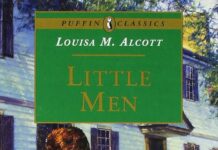in the intricate tapestry of Shakespeare’s comedies, All’s Well That Ends Well often occupies a curious, somewhat elusive corner-its blend of romance, wit, and moral ambiguity leaving readers and audiences divided. invites us to revisit this enigmatic play with fresh eyes, peeling back layers of meaning to explore its themes of destiny, agency, and social convention. This insightful examination offers a measured and nuanced perspective, shedding new light on a work that continues to provoke questions about the interplay between chance and choice.
Exploring the Intricacies of Fate and Fortune in the Heart of All’s Well That Ends Well

Within the rich tapestry of Shakespeare’s narrative, fate and fortune intertwine in a dance of unpredictability and design, challenging the characters’ resolve and illuminating their true natures. The play doesn’t simply present destiny as an external force but rather invites contemplation on how personal actions resonate within the grander scheme of chance. Helena’s journey, marked by perseverance and wit, exemplifies this nuanced interplay – her successes not handed by mere luck but crafted through an intricate balance of circumstance and deliberate choice. Fortune,therefore,emerges as a dynamic element,neither cruel nor kind,but a mirror reflecting human ambition and patience.
Exploring thes themes, one can identify key moments where fate seems to pivot the plot, yet they are invariably influenced or altered by human intervention. This complex exchange is underscored by several thematic contrasts:
- Chance versus agency: The unpredictable operations of fate clash with characters’ active striving.
- Passive acceptance versus strategic engagement: Characters who capitulate to fortune fare differently from those who negotiate with it.
- Appearance versus reality: Fortuitous events often disguise deeper motives and outcomes.
| Element | Manifestation | Impact |
|---|---|---|
| Fate | Unexpected illness of the king | Sets the plot in motion |
| Fortune | Helena’s success with the remedy | Changes social dynamics |
| Agency | Helena’s determination | Shapes her destiny |
A Balanced Examination of Themes and Character Motivations That Drive the Play’s Narrative

At the heart of the play lies a complex interplay between ambition, social hierarchy, and the unpredictable hand of fate. Characters are not merely puppets of circumstance; their motivations reveal an intricate tapestry of desires and fears that propel the narrative forward. As an example, Helena’s unwavering determination to transcend her social standing contrasts sharply with Bertram’s struggle between duty and personal discomfort. This duality highlights the tension between self-will and societal expectation, underscoring Shakespeare’s exploration of how personal agency navigates the capricious currents of fortune.
Moreover, the themes of love, deception, and reconciliation weave throughout the story with subtle nuance, inviting audiences to reflect on the nature of justice and merit. Consider the following elements that shape character decisions and thematic progression:
- Love as a catalyst: Helena’s pursuit of Bertram blurs the line between passion and perseverance.
- Deception’s dual role: Both a tool for survival and a moral dilemma, deception challenges the characters’ integrity.
- social mobility: The fluidity and rigidity of status influence choices and outcomes.
| Character | Motivation | Theme Exemplified |
|---|---|---|
| Helena | Unyielding love and ambition | Perseverance & Social Mobility |
| Bertram | Personal freedom vs. duty | Identity & Conflict |
| Countess | Maternal protection and societal order | class & Compassion |
Dissecting the Play’s Complex Moral Questions and Their Relevance to Modern Audiences

In a world increasingly dominated by questions of ethics and personal agency, the play pushes audiences to grapple with the nuances of right and wrong in ways that remain startlingly relevant today. Helena’s audacious pursuit of Bertram challenges traditional gender roles, inviting debate over the morality of deception as a tool for achieving happiness. Is her ruse an act of empowerment or an ethical breach? The tension between social duty and individual desire unfolds with each twist, encouraging viewers to ask: when does fate end and personal choice begin?
- Duty vs. Desire: How do personal ambitions measure up against societal expectations?
- Means Justify the Ends?: Is Helena’s clever manipulation ethically defensible?
- Transformation and Redemption: Can genuine change arise from flawed intentions?
Below is a brief comparison of key moral dilemmas from the play and their echoes in modern ethical debates:
| Play’s Moral Question | Modern Parallel |
|---|---|
| The use of deception to achieve love | Is ‘white lying’ ever justified in relationships? |
| Social mobility through unconventional means | Ethics of ambition in today’s competitive world |
| Female agency within patriarchal constraints | Contemporary debates on gender roles and empowerment |
How the Author unfolds the Layers of Hope, Desperation, and Ambition Through Shakespearean Drama

the narrative intricately explores the intertwined emotions of hope, desperation, and ambition, revealing how these forces drive characters toward their destinies. Through the lens of Shakespearean drama, hope often emerges as a flickering beacon-fragile yet persistent-that propels individuals beyond the constraints of their social status and circumstance.This delicate spark contrasts sharply with moments of desperation, exposing raw vulnerabilities and the lengths one might go to alter fate. The author skillfully contrasts these states with ambition, which acts as both a motivator and a potential harbinger of downfall, blurring the lines between virtue and vice.
To deepen the understanding of these themes, consider the emotional spectrum Shakespeare captures:
- Hope: A catalyst for courage and perseverance
- Desperation: The shadow that tests moral boundaries
- Ambition: The double-edged sword shaping fate
| Theme | Representative Character | Key Moment |
|---|---|---|
| Hope | Helena | Relentless pursuit of Bertram |
| Desperation | Bertram | Attempts to evade the unfeasible tasks |
| Ambition | Countess | Strategic manipulation for social elevation |
the author’s layered portrayal invites readers to reflect on how these timeless emotions govern human actions and the unpredictable dance between fate and free will within Shakespeare’s compact yet profound drama.
The Role of Social Hierarchy and Class Distinctions in Shaping Characters’ Choices and Outcomes

In Shakespeare’s intricate tapestry, the interplay of social strata acts as a silent puppeteer, guiding decisions and destinies with invisible strings. Characters are often caught in the crosshairs of their class positions, where ambitions clash with expectations, and personal desires wrestle with societal duties. As an example, Helena’s relentless pursuit of Bertram defies the rigid boundaries separating nobility from commoners, challenging conventions that dictate not only whom one may love but also how far one may go to alter fate. The delicate balance of power, privilege, and prejudice subtly dictates the horizon available to each character, setting a stage where fortune is less about chance and more about one’s place in the social order.
Key influences of social hierarchy on character dynamics include:
- Constraints of rank: Motivating secretive choices and bold risks to transcend status.
- Patronage and obligation: Binding characters to duties that shape their paths and relationships.
- Perceptions of honor: Fueling conflicts between public reputation and private desires.
| Character | Social Status | Impact on Choices |
|---|---|---|
| Bertram | Count | Struggles with matrimonial duty vs. personal pride |
| Helena | Commoner | Defies class limitations through cunning and courage |
| Lavinia | Noblewoman | Embodies ideal virtues shaped by societal expectations |
Visualizing Key Scenes That Capture the Play’s Tension Between Destiny and Free Will
At the heart of the play lie moments where characters wrestle with the boundaries of their autonomy, their choices rippling through the narrative to question whether fate or free will ultimately governs their paths. Consider the electrifying scene where Helena’s determination to reclaim Bertram not only defies social conventions but also tests the limits of predestination. Her bold actions challenge the notion that destiny is a fixed script, instead illuminating how personal agency and resolve can steer even the most seemingly predetermined outcomes. This blend of circumstance and choice invites audiences to peer deeper into the fabric of the story, where every decision carries the weight of potential transformation.
Another striking tableau unfolds during the king’s exchange with his lords, a moment steeped in irony and layered with ambiguity. The regal authority symbolizes the inescapable hand of fate,while the lords’ varied reactions embody the human struggle to carve out self-determination within imposed structures. Below is a snapshot of these conflicting forces at play, presented in a concise format:
| Element | Representation | Effect on tension |
|---|---|---|
| King’s Decree | Unyielding Fate | Frames inevitable consequence |
| Lords’ Reactions | Varied Free Will | injects unpredictability |
| Helena’s Plea | Active Choice | Challenges destiny’s grip |
- Conflict between societal order and individual aspirations underpins the dramatic tension,
- Moments of hesitation and resolve reveal characters’ internal battles,
- Symbols and dialog articulate the nuanced dance of fate and freedom.
Recommendations for Readers Seeking a Thoughtful and Nuanced interpretation of the Play
To truly appreciate the intricate dance of destiny and agency in All’s Well That Ends Well, readers should embrace the subtle interplay of character motivations and past context. Instead of viewing the plot as merely a comedic resolution, consider the layers of social commentary Shakespeare weaves through Helena’s relentless pursuit and the ethical quandaries it raises. Focus on the tension between personal desire and societal expectation, which invites readers to question whether fortune favors virtue or cunning. Delving into these complexities enriches the reading experience, prompting a more empathetic engagement with the characters’ dilemmas.
Exploring multiple perspectives is key to unlocking the play’s thematic depth. Readers can benefit from approaches like:
- Analyzing Helena’s agency and how it challenges early modern gender norms
- Reflecting on Bertram’s character arc through a lens of privilege and personal growth
- Considering the role of fate versus free will in shaping the narrative’s outcome
- Cross-referencing contemporary interpretations and scholarly critiques to spark thoughtful debate
Engaging with these angles encourages a balanced understanding, moving beyond surface-level judgments toward a nuanced dialogue about the human condition as portrayed in this layered work.
The Author’s Writing Style and Scholarly Approach to illuminating Shakespeare’s Less Explored Work
With a meticulous eye and a passion for uncovering subtleties, the author adopts a style that is both accessible and profound, inviting readers to journey beyond the surface of Shakespeare’s oft-overlooked play. The prose is elegantly crafted, blending literary analysis with evocative storytelling to illuminate themes of fate, fortune, and moral ambiguity woven through the narrative. By engaging directly with the text, the author masterfully navigates the intricate character dynamics and dramatic paradoxes, fostering a deeper gratitude for the emotional and philosophical complexities that define the play.
- contextual insights: Embedding historical and cultural frames enriches understanding without overwhelming.
- Close reading techniques: Detailed examinations of key passages highlight Shakespeare’s linguistic craftsmanship.
- Thematic connections: Links to broader motifs in Shakespeare’s oeuvre reveal the play’s unique place in his canon.
In addition to its eloquent narrative, the scholarly approach is structured yet inviting, carefully balancing critical rigor with an approachable tone. Readers encounter thoughtfully designed comparisons that clarify character motivations and dramatic outcomes, frequently enough summarized in visually engaging formats like tables that clarify complex relationships or plot developments. This methodology not only demystifies the play’s challenges but also encourages an active dialogue with the text, making the author’s insight a valuable companion for both scholars and casual readers alike.
| Character | Fate’s Role | Fortune’s Influence |
|---|---|---|
| Helena | Agent of destiny through determination | Limited but pivotal interventions |
| Bertram | Caught between obligation and desire | subject to changing social tides |
| Countess | Symbolizes familial and societal obligation | Her fortunes shape key motivations |
Unraveling Fate and Fortune offers a measured and insightful exploration of All’s Well That Ends Well, peeling back the layers of Shakespeare’s intricate narrative with both reverence and scrutiny. Whether you come as a seasoned scholar or a curious reader, this thoughtful look invites you to reconsider the twists of destiny and the complexities of human will embedded in the play. As the final curtain falls, the book leaves us pondering not just how stories conclude, but what those endings reveal about the nature of fortune-and ourselves.










